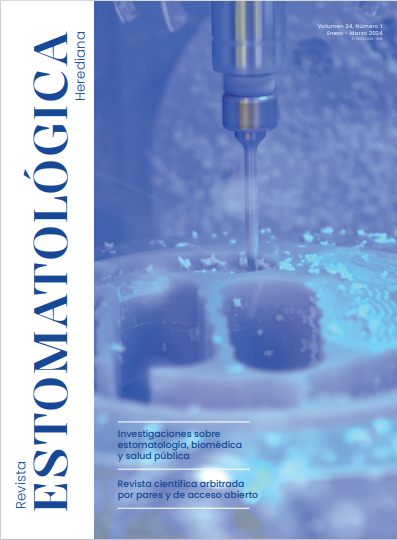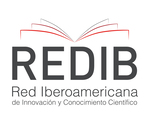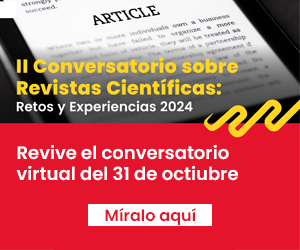Dental digital impressions with intraoral scanners: a review of the literature
DOI:
https://doi.org/10.20453/reh.v34i1.5332Keywords:
dental impression technique, dental impression materials, computer-aided designAbstract
Computer-aided design and computer-aided manufacturing (CAD-CAM) has been applied in dentistry for the preparation and analysis of various dental treatments. It starts with capturing images through intraoral scanners, having different types of software and image export systems and technology. The advantages of this digital workflow are the following: better adjustment, shorter clinical time, and speed in dental treatments, in addition to providing greater practicality for dental surgeons. The accuracy he provide is clinically acceptable in comparison with conventional methods, so there is sufficient evidence for their validity; however, it should be taken into account that several factors can alter the result, such as the operator's experience, the type of scanner, the type of software, the software update, the scanning principle of the scanner, the environment, the scanning sequence, and the oral structures. The present review article aims to analyze the literature on the different characteristics and properties that intraoral scanners present today and the evidence of the potential benefits and accuracy of digital impression techniques versus conventional impression techniques.
Downloads
References
Kihara H, Hatakeyama W, Komine F, Takafuji K, Takahashi T, Yokota J, et al. Accuracy and practicality of intraoral scanner in dentistry: a literature review. J Prosthodont Res [Internet]. 2020; 64(2): 109-113. Disponible en: https://doi.org/10.1016/j.jpor.2019.07.010
Siqueira R, Galli M, Chen Z, Mendonça G, Meirelles L, Wang HL, et al. Intraoral scanning reduces procedure time and improves patient comfort in fixed prosthodontics and implant dentistry: a systematic review. Clin Oral Investig [Internet]. 2021; 25(12): 6517-6531. Disponible en: https://doi.org/10.1007/s00784-021-04157-3
Carneiro Pereira AL, Bezerra de Medeiros AK, De Sousa Santos K, Oliveira de Almeida É, Seabra Barbosa GA, Da Fonte Porto Carreiro A. Accuracy of CAD-CAM systems for removable partial denture framework fabrication: a systematic review. J Prosthet Dent [Internet]. 2021; 125(2): 241-248. Disponible en: https://doi.org/10.1016/j.prosdent.2020.01.003
Bandiaky ON, Le Bars P, Gaudin A, Hardouin JB, Cheraud-Carpentier M, Mbodj EB, et al. Comparative assessment of complete-coverage, fixed tooth-supported prostheses fabricated from digital scans or conventional impressions: a systematic review and meta-analysis. J Prosthet Dent [Internet]. 2022; 127(1): 71-79. Disponible en: https://doi.org/10.1016/j.prosdent.2020.09.017
Siqueira R, Galli M, Chen Z, Mendonça G, Meirelles L, Wang HL, et al. Intraoral scanning reduces procedure time and improves patient comfort in fixed prosthodontics and implant dentistry: a systematic review. Clin Oral Investig [Internet]. 2021; 25(12): 6517-6531. Disponible en: https://doi.org/10.1007%2Fs00784-021-04157-3
Khalifa N. Digital impressions. En: Jain P, Gupta M, editores. Digitization in Dentistry. Cham: Springer; 2021. pp. 169-187.
Mangano F, Gandolfi A, Luongo G, Logozzo S. Intraoral scanners in dentistry: a review of the current literature. BMC Oral Health [Internet]. 2017; 17(1): 149. Disponible en: https://doi.org/10.1186/s12903-017-0442-x
Ma Y, Guo YQ, Saleh MQ, Yu H. Influence of ambient light conditions on intraoral scanning: a systematic review. J Prosthodont Res [Internet]. 2023. Disponible en: https://doi.org/10.2186/jpr.jpr_d_23_00098
Pan Y, Tsoi JKH, Lam WYH, Chen Z, Pow EHN. Does the geometry of scan bodies affect the alignment accuracy of computer‐aided design in implant digital workflow: an in vitro study? Clin Oral Implants Res [Internet]. 2022; 33(3): 313-321. Disponible en: https://doi.org/10.1111/clr.13890
Schlenz MA, Michel K, Wegner K, Schmidt A, Rehmann P, Wöstmann B. Undergraduate dental students' perspective on the implementation of digital dentistry in the preclinical curriculum: a questionnaire survey. BMC Oral Health [Internet]. 2020; 20(1): 78. Disponible en: https://doi.org/10.1186/s12903-020-01071-0
Lam WYH, Mak KCK, Maghami E, Molinero-Mourelle P. Dental students' preference and perception on intraoral scanning and impression making. BMC Med Educ [Internet]. 2021; 21(1): 501. Disponible en: https://doi.org/10.1186/s12909-021-02894-3
Manisha J, Srivastava G, Das SS, Tabarak N, Choudhury GK. Accuracy of single-unit ceramic crown fabrication after digital versus conventional impressions: a systematic review and meta-analysis. J Indian Prosthodont Soc [Internet]. 2023; 23(2): 105-111. Disponible en: https://doi.org/10.4103/jips.jips_534_22
Hasanzade M, Aminikhah M, Afrashtehfar KI, Alikhasi M. Marginal and internal adaptation of single crowns and fixed dental prostheses by using digital and conventional workflows: A systematic review and meta-analysis. J Prosthet Dent [Internet]. 2021; 126(3): 360-368. Disponible en: https://doi.org/10.1016/j.prosdent.2020.07.007
Sfondrini MF, Gandini P, Malfatto M, Di Corato F, Trovati F, Scribante A. Computerized casts for orthodontic purpose using powder-free intraoral scanners: accuracy, execution time, and patient feedback. Biomed Res Int [Internet]. 2018; 2018: 4103232. Disponible en: https://doi.org/10.1155/2018/4103232
Tomita Y, Uechi J, Konno M, Sasamoto S, Iijima M, Mizoguchi I. Accuracy of digital models generated by conventional impression/plaster-model methods and intraoral scanning. Dent Mater J [Internet]. 2018; 37(4): 628-633. Disponible en: https://doi.org/10.4012/dmj.2017-208
Duvert R, Gebeile-Chauty S. La précision des empreintes numériques intra-orales en orthodontie est-elle suffisante? [Is the precision of intraoral digital impressions in orthodontics enough?]. Orthod Fr [Internet]. 2017; 88(4): 347-354. Disponible en: https://www.jle.com/10.1051/orthodfr/2017024
Tabesh M, Nejatidanesh F, Savabi G, Davoudi A, Savabi O. Marginal accuracy of lithium disilicate full-coverage single crowns made by direct and indirect digital or conventional workflows: a systematic review and meta-analysis. J Prosthodont [Internet]. 2022; 31(9): 744-753. Disponible en: https://doi.org/10.1111/jopr.13515
Atieh MA, Ritter AV, Ko CC, Duqum I. Accuracy evaluation of intraoral optical impressions: a clinical study using a reference appliance. J Prosthet Dent [Internet]. 2017; 118(3): 400-405. Disponible en: https://doi.org/10.1016/j.prosdent.2016.10.022
Kong L, Li Y, Liu Z. Digital versus conventional full-arch impressions in linear and 3D accuracy: a systematic review and meta-analysis of in vivo studies. Clin Oral Investig [Internet]. 2022; 26(9): 5625-5642. Disponible en: https://doi.org/10.1007/s00784-022-04607-6
Pilecco RO, Dapieve KS, Baldi A, Valandro LF, Scotti N, Pereira GKR. Comparing the accuracy of distinct scanning systems and their impact on marginal/internal adaptation of tooth-supported indirect restorations. A scoping review. J Mech Behav Biomed Mater [Internet]. 2023; 144: 105975. Disponible en: https://doi.org/10.1016/j.jmbbm.2023.105975
Downloads
Published
How to Cite
Issue
Section
License
Copyright (c) 2024 Los autores

This work is licensed under a Creative Commons Attribution 4.0 International License.
The authors retain the copyright and cede to the journal the right of first publication, with the work registered with the Creative Commons License, which allows third parties to use what is published as long as they mention the authorship of the work, and to the first publication in this journal.























